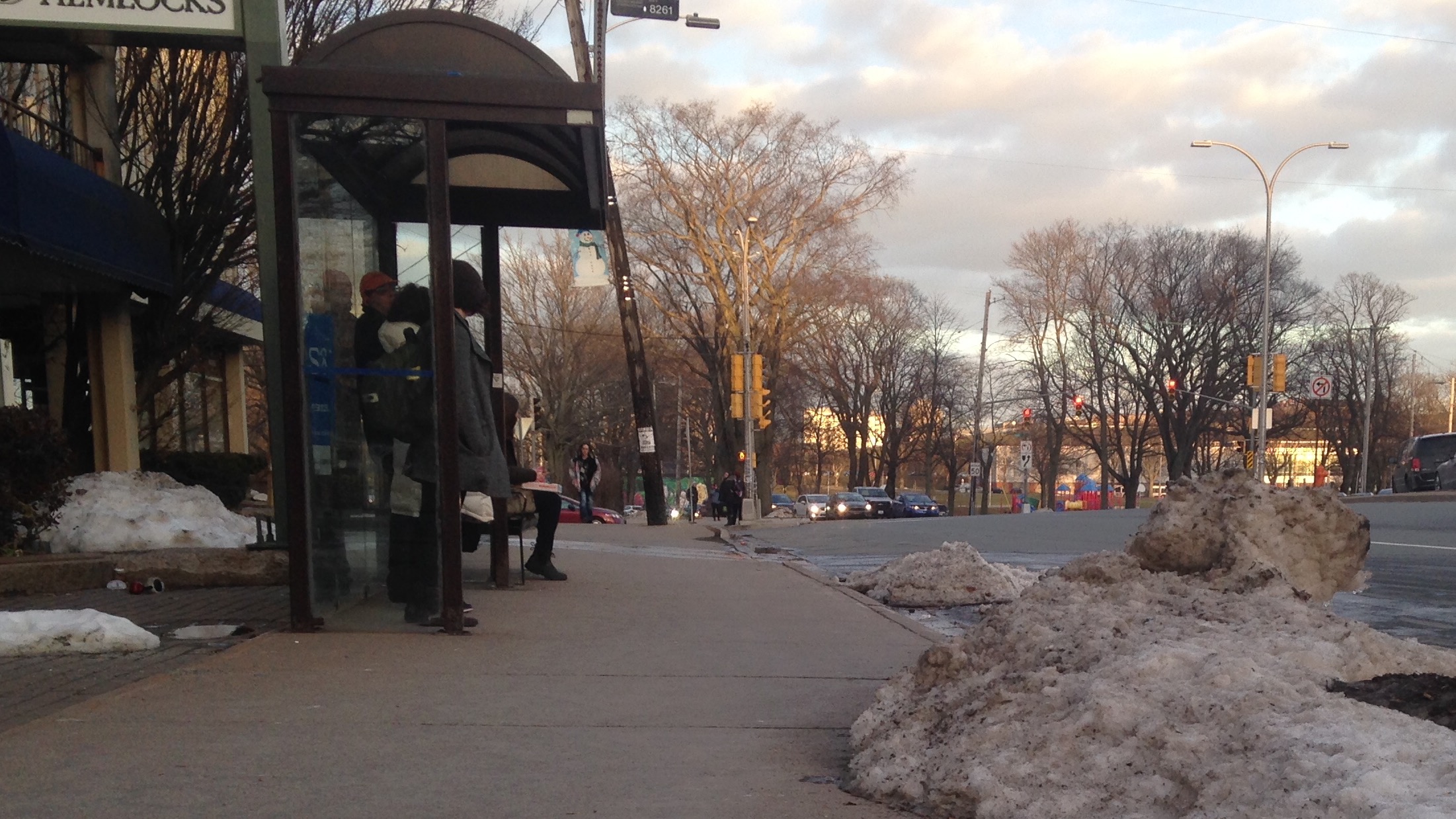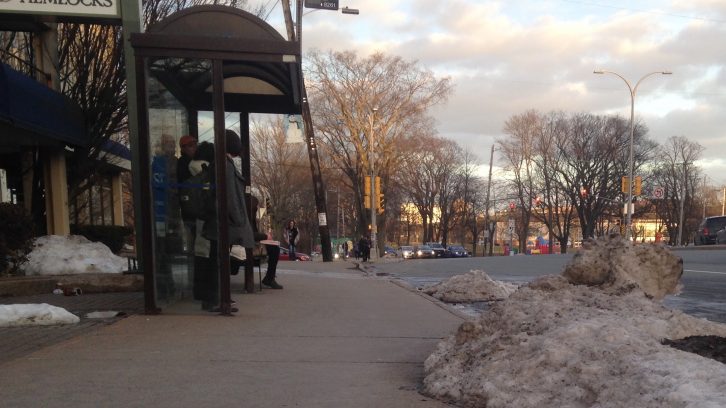Explainer
Mother Nature vs. mobility: HRM transit in the snowy season
Winter woes befall buses, but the HRM is holding fast for forward fixes

caption
Imagine clambering over snow piles that hadn't been melting for several days already
caption
Clambering over snow piles to get to the bus can be problematic for passengers with limited mobilityMobility and accessibility improvements are pressing onward in the Halifax Regional Municipality. Halifax Transit and the HRM awarded a contract for new buses to Nova Bus Ltd. in May, and the new vehicles are starting to arrive.
However, some advocates say, accessible buses don’t mean much when transit users are forced to trudge through snow piles just to get to the door.
Following a snowstorm earlier this month that ended on Jan. 8, some of the accessibility improvements on buses can’t overcome snow removal concerns. Related stories
So, what exactly is going on?
Current Standards
Timelines on the HRM’s Snow Operations page indicate that bus stops have the lowest priority for scheduled snow clearing. The page says the bus stops should be cleared by 48 hours after the end of a weather event, at the latest.
District 7 Councillor Waye Mason says snow removal is sometimes done faster, but timelines depend on the situation.
“Forty-eight hours is the worst case scenario,” Mason says. “When we get more snow like in this past storm, it will take longer. It’s a difficult thing to say because you don’t want to diminish anyone’s rights, but technically speaking, it’s hard because there aren’t enough snow blowers in the city to do it faster.”
Streets and sidewalks are expected to be cleared by 36 hours after a weather event.
This means that all streets and sidewalks, from high traffic arteries like Robie Street to gravel lanes in the suburbs of the HRM, are targeted for clearing before bus stops.
HRM Senior Communications Advisor Tiffany Chase says the municipality is responsible for clearing “approximately 3,800 km of lanes and 1,000 km of sidewalks.” The HRM is “not a small municipality geographically,” says Chase, as it has “over 2,300 bus stops.”
Problem Spots
Even though it may take a while, making room for a bus to pull over isn’t the only requirement for snow clearing.
A space for loading the bus at its front doors must also be cleared, but the specifics of how long that zone should be isn’t stated on the Snow Operations website.
Jeff Blair, a volunteer with transit advocacy group It’s More Than Buses, says the current snow-free spaces he sees aren’t big enough.
“We need 60 feet of clearance at bus stops, with no snow right to the curb … to use all the (bus) doors,” says Blair. “Now you get only five or 10 feet, and can only operate one door. Someone with mobility challenges couldn’t get on or off easily because two thirds of the doors might have snow banks in front of them.”
Deputy Mayor Steve Craig echoes some of Blair’s concerns. While examining the municipality’s website, he noted “it only says (spaces are) opened ‘as much as possible’… there’s no standard for distance.”
What’s Being Done?
Unlike suburban areas, stops in the downtown core or more urban streets don’t have green spaces on curbs that snow can be pushed onto.
“Some more urban stops will have snow entirely removed; it can’t be stored,” says Chase.
However, removing snow rather than clearing it requires heavier and more expensive machinery that stops traffic.
“Removal is a proactive measure, given the budget that we have,” says Chase.
She says that heavier equipment “is on retainer and not needed every time,” which reduces maintenance costs.
Mason and Craig are also paying more attention as current and outgoing members, respectively, of the HRM’s Accessibility Advisory Committee. The committee identifies accessibility issues the public might encounter, including those that occur using transit.
Craig says, “it’s an issue that I’ve brought up and talked about (with council); transit clearing needs to improve.”
To combat the current low priority standard for bus stops, Mason thinks Halifax should take note from other Canadian cities.
“The frustrating thing is that we have the same 48-hour standard for a relatively light snowstorm,” says Mason. “Places like Montreal have different standards depending on the amount of snowfall.”
However, he also says things are getting better. As a frequent transit user, he has noticed a significant difference in this week’s snowstorm over previous winters in the HRM.
“Along Barrington Street and Spring Garden Road, within 36 hours, snow was cleared back to the third sets of bus doors,” says Mason. “It’s a real improvement over two years ago.”

